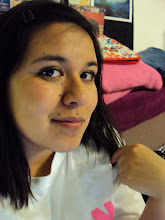
"Two people form a couple; and every couple is an odd couple."
- Susan Sontag
In "America, Seen through Photographs, Darkly", Susan Sontag greatly evaluates Diane Arbus's photography, especially 112 photographs shown at the Museum of Modern Art in 1972. Sontag first contrasts Edward Steichen's1955 exhibit "Family of Man", which argues that "human beings, for all their flaws and villainies, are attractive creatures," to Arbus's work. Sontag believes that Arbus's photographs do not feature beautiful people but "freaks" that were seen as ugly, grotesque, unflattering and bizarre. Steichen's photographs seem to show the "human nature shared by everybody" but Arbus's photographs suggests that "everybody is an alien, hopelessly isolated, immobilized in mechanical, crippled identities and relationships."
Sontag believes that Arbus's subjects are "victims" and are photographed without capturing compassion for them. However Arbus established her credibility as a photographer because she got to know her subjects and is apparent in the way they have posed and are facing the camera straight on, which sometimes makes the portrait odder. She did not spy on "freaks" but they trusted her enough to give themselves away. Even though the audience may not feel compassion towards the subject, the photographer did. Arbus said photography was her license to go and do whatever she wanted. Sontag says that Arbus's "image of the photographer's naive quest" was to "seduce subjects into disclosing their secrets." The photographs speak for themselves and reveal the subject in their own light.
Sontag goes on to relate Arbus's work to her own life. Since Arbus photographed oddities and captured the "unknown" Sontag poses the question of what is the "unknown?" Arbus came from a well-to-do Jewish family completely immersed in what was moral, health-minded, prudent and unrisky. Arbus's camera was her sense of reality since she said she felt growing up she was "confined in a sense of unreality." Sontag believes that Arbus's interest in "freaks" was her own violation of "innocence" and meant to "undermine her sense of being privileged, to vent her frustration at being safe." Unlike a poet that writes about his own pain, Arbus collected images that were painful, emitting her own feelings. Ultimately Arbus was a "casualty" of a "psychic ambush" "of her own candor and curiosity" as Sontag argues, she committed suicide in 1971.

No comments:
Post a Comment